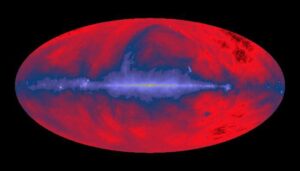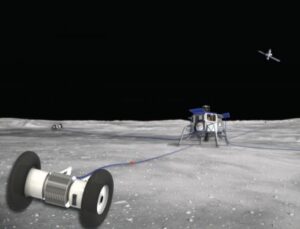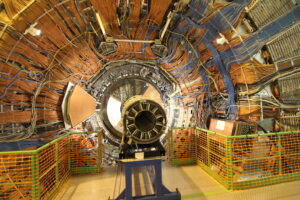
The far side of the Moon is one of the most radio-quiet locations in the Earth-Moon system, which makes it an favorable spot for the Search for Extraterrestrial Intelligence (SETI), which scans the skies for radio communications.
Radio telescopes on Earth are located in isolated parts of the globe with minimal radio pollution, but they can’t compare to the far side of the Moon for blocking out radio interference. The idea is not a new one, but it has gotten fresh life thanks to a white paper submitted to the National Academy of Sciences’ Planetary Science and Astrobiology Decadal Survey 2023-2032. The team is led by Eric J. Michaud, a mathematics undergraduate at UC Berkeley, reports Phys.org.
The need to establish a site for a radio telescope is pressing, says Dr. Pete Worden, former director of NASA’s Ames Research Center. “There is some urgency in establishing a lunar far-side radio-quiet reserve before we get the burgeoning problem we have in Earth orbit with optical interference from communications satellites. We are already concerned about the Chinese communications satellites—so this needs to be a global consensus now!”
Radio noise could be mitigated all the more if the telescope were located in a crater. Crater walls would block out interference from orbiters or spacecraft that will become increasingly common on the Moon.
A lunar location would have two big drawbacks: One would be the cost of delivering the telescope to the far side of the Moon. Another, assuming the main energy source was solar, would be the difficulty of storing enough energy to last a two-week lunar night.
An alternative to a ground facility would be a telescope deployed in lunar orbit. One bonus: the weightlessness of orbit would do away with the need for a supporting structure. But the nature of the Moon’s gravitational field means that most lunar orbits are inherently unstable, which creates a new set of problems.
As Michaud concedes, much work needs to be done before the dream of a lunar SETI observatory can be realized.
Bacon’s bottom line: If the technical hurdles can be addressed, a SETI mission could add impetus to building a lunar transportation and logistical infrastructure and possibly a justification for maintaining a scientific staff on the Moon. Scientific investigation will lead the way in early lunar development.


